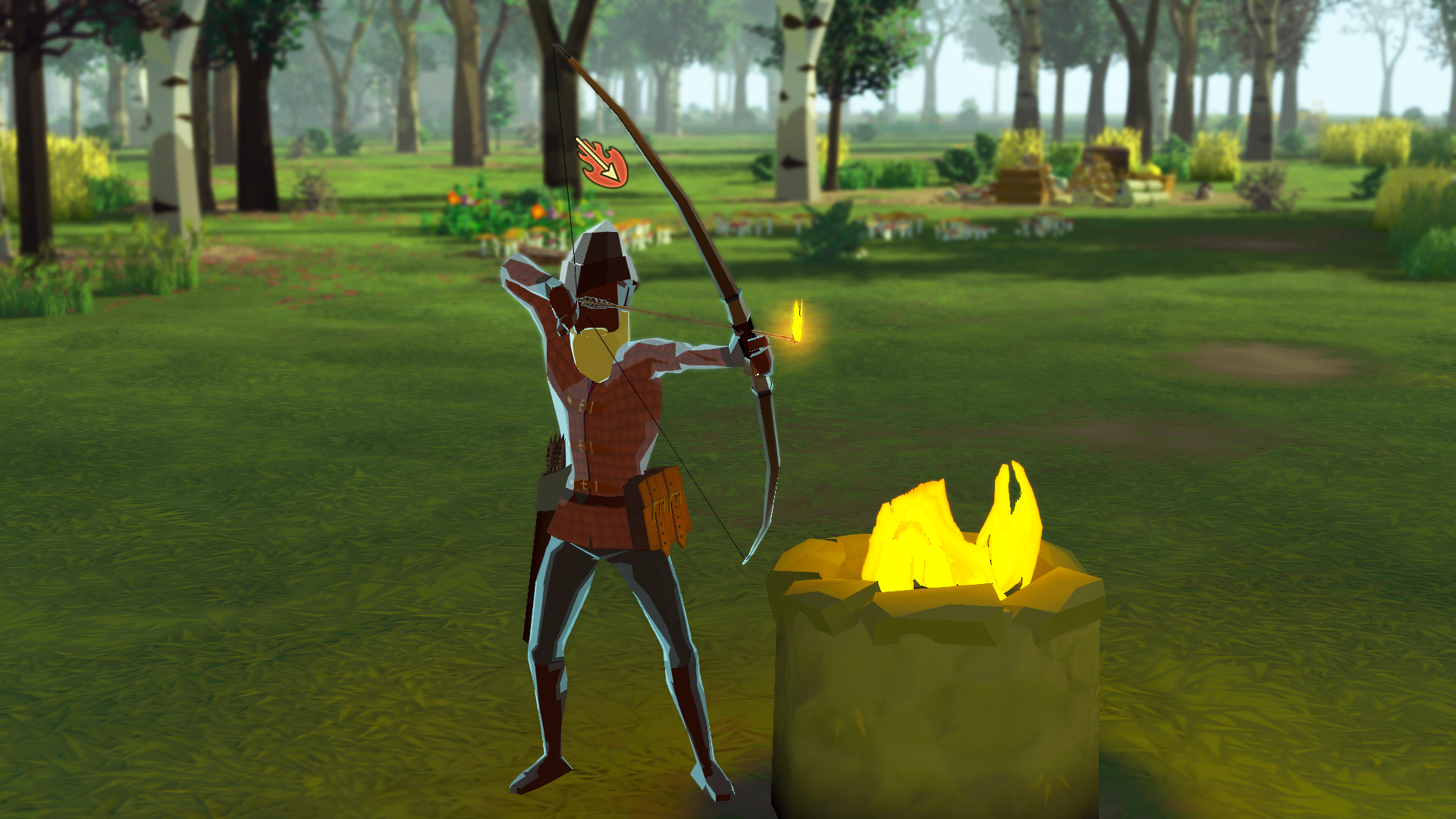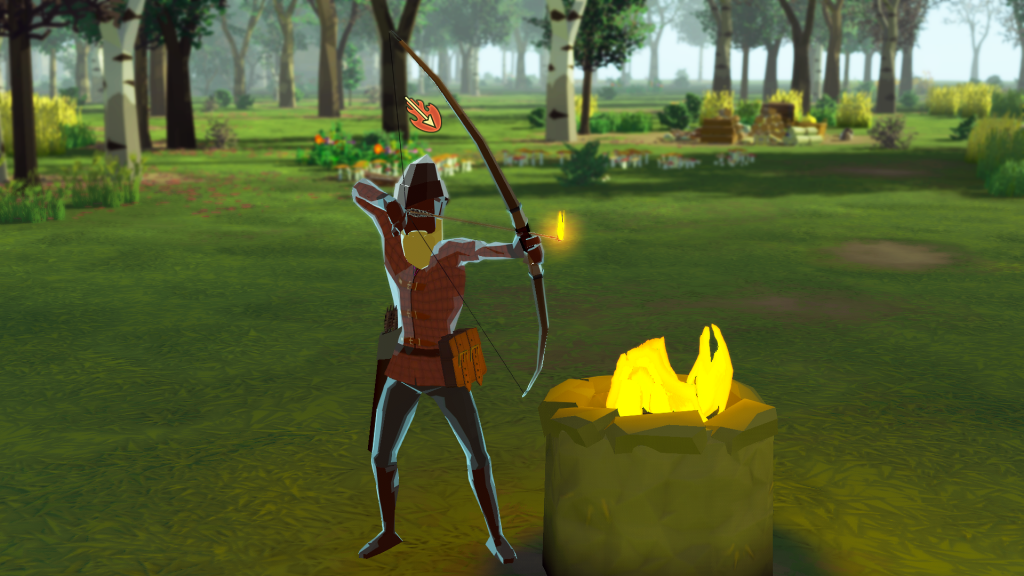Greetings, medievalists!
We’re still on the fiery topic, but this time, let’s talk about how you can use fire in combat. The most obvious choice? Fire arrows. Any flame source (braziers, torches, etc.) can ignite fire arrows. An archer will have ignited arrow order next to the attack order, which upon selecting, will spawn a fire arrow when settlers stand next to the flame source. These incendiary arrows are not as precise and do less damage. However, they spawn a small flame wherever they land. Keep that in mind if you’re fighting enemies indoors. And if you hit an enemy with a fire arrow! Well, prepare for some chaos.
Only regular bows – short bow, longbow, and war bow – can use fire arrows. Unfortunately, other weapons can’t be set ablaze. No fire swords here, unfortunately, but maybe you’ll want to revisit that idea with the modding v2 that is coming in the Update #16.
Fire shenanigans will not stop there – we’re going to introduce flammable oil. Flammable oil is a resource that you’ll be able to produce within the Oil Press building, and you will be able to use it in a couple of ways. You can spill oil on tiles and make them extremely flammable. Then, proceed with an archer and ignite the oil with a fire arrow. Witness super fast spreading of fire from oil tile to oil tile, making a nice stronghold-esque fire trap. Pretty cool, right?
We plan to introduce oil jug traps that, when triggered, will spill oil in a radius and ignite it.
But let’s take all this a bit further.
We’re also adding Greek fire oil and Greek fire. Invented by Byzantines, Greek fire was a fearsome weapon. It had the ability to keep burning while on water. As such, it was often used in naval battles. The creation of it was a closely guarded secret and its knowledge was thought to be lost. But not to settlers of Going Medieval (we took some creative liberties here and totally made this up), as they’ll be able to upgrade fire oil into Greek fire oil with saltpeter and quicklime. Here is our logic for that.

Quicklime, or calcium oxide (CaO), will be created at kilns. Quicklime reacts with water in an exothermic reaction, producing slaked lime (calcium hydroxide, Ca(OH)₂) and releasing a significant amount of heat. Saltpeter is a common name for potassium nitrate (KNO₃), a naturally occurring mineral and chemical compound. It acts as an oxidizer to fuel the combustion of pyrotechnic mixtures. We’ll be introducing Saltpeter Works as a building for producing saltpeter. So, with our logic, it makes sense to bind those things with oil to create Greek fire. (Also, we can use saltpeter and quicklime for other stuff in the future (who said gunpowder?).)
Greek fire in our game is green, but besides that, the functionality is the same. It’s a stronger version of fire that can burn underwater and in the rain. It will not spread as Greek fire, but will spawn regular fire around it. Greek oil can be used with fire in the same way as regular oil does, but do remember that Greek fire is not easily extinguished.
What does this mean for enemies? For now, we’ll start simple – enemies will be able to set fire to structures that they are attacking. We’ll revisit this once their AI gets upgraded, but don’t take this ability lightly. Imagine an enemy going through a library and getting a sudden urge to burn a nearby research table. And the library is made of wood and that starts a chain reaction and! oh no! You get the point.
So how about that? What are your thoughts on these fire shenanigans? Do you already have some specific scenario in mind that you want to test? Write it in the comments. Next week we’ll talk about long awaited training buildings and other interesting upgrades. Until then…
Stay medieval!

